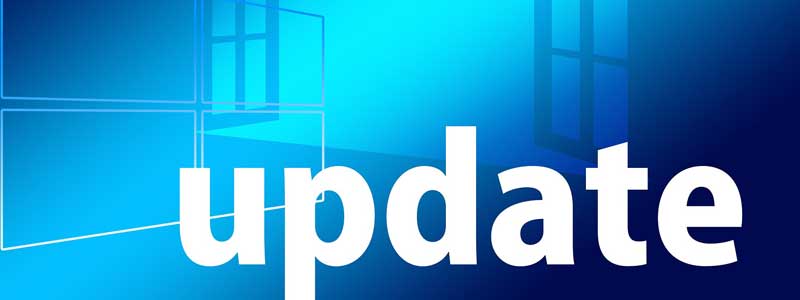Windows is a popular operating system among many users because of its user-friendliness. Microsoft has launched its masterpieces one after another because of many reasons such as security, better functionalities, improved look and feel, compatibility with new hardware, latest software support, and many more.
Top Rated Budget Laptops
Last update on 2025-03-30 / Affiliate links / Images from Amazon Product Advertising API
Some of its popular operating systems which are functional nowadays are:
- Windows 7
- Windows 8
- Windows 8.1
- Windows 10
- Windows 11 (Latest)
Among the aforementioned operating systems, Windows 7 is the popular one with which people are comfortable. Windows 7 was launched to address the poor reception of Windows Vista. With the launch of Windows 7 in 2009, it became prevalent, and after serving 11 years now, Microsoft has ended its support.
Microsoft has ended Windows 7 mainstream support dated January 13, 2015, but after that, Microsoft still managed to provide extended support until January 14, 2020. During the serving period of Windows 7, Microsoft also launched Windows 8 and Windows 8.1 but unfortunately, both the operating system failed to win the user’s hearts.
On July 29, 2015, Microsoft launched Windows 10, but the users are so comfortable with Windows 7 they still do not want to switch to it. Due to this reason, Microsoft offers a free upgrade of Windows 10 from Windows 7.
Microsoft offered a free upgrade from 2016 to 2017, which is expired now. But users with Windows 7, Windows 8, and Windows 8.1 license can still update their systems to Windows 10. Today we will see the step-by-step procedure to update the legacy operating systems to Windows 10.
But before moving on to the procedure, we will first see why we should switch to Windows 10.
Note: This procedure is Microsoft environment specific and will be valid on devices with Microsoft-based operating systems only.
Why do we need to update our Laptop to Windows 10?
As we have already discussed, Windows 7 is a commonly used operating system that is very popular among users worldwide. Now let’s explore various reasons why we need to update our Laptops to Windows 10. Some of the reasons are as follows:
- End of Windows 7 support.
- Better security
- Improved application compatibility
- Hardware Compatibility.
- New but familiar Interface.
So, above are some conditions in which we need to upgrade our laptops or system to windows 10.
Without wasting a single moment, let’s explore all the possibilities of upgrading Laptops to Windows 10.
Procedure:
There are several ways of upgrading laptops to windows 10. In this article, we will try to discuss each one of them.
The most used methods of updating a Laptop to Windows 10 are as follows:
- With the help of Windows 10 CD
- With the help of the Microsoft Media Creation Tool
- With the help of Microsoft’s free update
All the methods mentioned above will provide the same result, which means these will help us to update our Laptops over Windows 10.
Halt…. Halt…. Halt…… before moving any further, remember to backup your data either over the cloud or on any other removable media or on any other laptop. What we are going to do is irrecoverable.
Prerequisites:
Before installing or updating the Laptop to Windows 10, we must ensure that our system has the required configuration that supports the operating system.Windows 7 sp1 or windows 8.1
- 1 GHz processor or faster
- 1 GB RAM for 32bit, 2GB RAM for 64bit
- 16GB HDD for 32bit or 20GB for 64bit
- DirectX9 or Later Graphics card
- 800 x 600 Display resolution
Remember, the above are the minimum requirements for Windows 10, but we recommend having a system with a better configuration than the above. Now let’s explore the methods one by one:
Method # 1: With the help of Windows 10 CD
Updating a laptop to windows 10 with this method is straightforward and requires no special tool. Let’s go with the following steps:
Step # 1:
In this method, all we have to do is take a complete backup of the system or at least valuable data either manually or with the help of any specialized software.
Step # 2:
Now put the Windows 10 cd in the cd ROM and restart the system.
Step # 3:
Move into the BIOS and change the boot order (give 1st boot priority to the optical drive). For entering the BIOS following options can be used (as per the Laptop manufacturer)
- Acer and Asus: F2 or Del
- Dell: F2 or F12
- HP: ESC or F10
- Lenovo: F1, F2, or Fn + F2
- Lenovo ThinkPad: Enter + F1.
- MSI: DEL
- Microsoft Surface Tablets: Press and hold the volume-up button.
- Samsung and Toshiba: F2
- Sony: F1, F2, or F3
Step # 4:
Once we have set the boot priority, just save the changes and reboot.
Step # 5:
Now the system starts with the optical drive. Click the “Next” on Language and currency setting window.
Step # 6:
On the next window, press “Install now.”
Step # 7:
Enter the Windows 10 License key and press “Next.”
Step # 8:
On the next screen, select the “Custom: Install Windows only (advance)” option for a fresh installation.
Step # 9:
Windows will ask to create a partition. If the system has displayed previous partitions, delete the existing partition and recreate them; after this, press “Next”.
Step # 10:
Select the “Region” when asked and press “Yes”.
Step # 11:
Select the appropriate Keyboard.
Step # 12:
On add account screen, create an account (local administrator) and set its password.
Step # 13:
Choose privacy settings and follow the instructions to complete the installation.
By the above method, we can update our laptop to windows 10.
Method # 2: With the help of a media creation tool
In the above method, we have seen the method of updating a laptop with Windows 10 installation from scratch. But in this method, we upgrade our laptop from Windows 7 to Windows 10 with its previous settings, files, and applications intact.
For the safe side, we would recommend taking the backup of the laptop before performing these steps.
Let’s follow the steps below:
Step # 1:
Go to Download Windows 10 (microsoft.com) to download the media creation tool.
Step # 2:
Open the file once downloaded
Step # 3:
Press “Accept” the notice and license terms.
Step # 4:
Select “Upgrade this PC now” if we want to upgrade the current laptop. If we want to upgrade any other PC, we will select the “Create installation media for another pc”. But in our case, we will select the first option.
Step # 5:
Click on the “Next” button.
Step # 6:
Now the setup will ask for a valid Windows key.
Step # 7:
After entering the Windows license key, press the “Next” button.
Step # 8:
Select the “Keep personal files and apps” option.
Step # 9:
After this, press the “Install” button.
Step # 10:
Click “Next” on the login screen.
Step # 11:
After this, press the “Use Express settings” button.
Step # 12:
Click the “Next” button on the “New apps for new windows” page.
Step # 13:
Afterward, the system will prompt “Finalizing your settings” and prompts for the credentials.
Step # 14:
After this, Windows 10 will perform the initial setup, and then it will take us to the Windows desktop.
We can now enjoy the brand-new windows 10 experience with all previous apps installed, as we selected the “keep personal files and apps” option during the setup.
Method # 3: With the help of Microsoft’s free upgrade
It is a method that Microsoft initially launched while distributing the free upgrade of Windows 10 with the help of Microsoft Windows updates during 2015 and onwards. Although this method is no longer supported, we have mentioned it here just for knowledge. In this method, we perform the following steps
Step # 1:
First, we need to book the windows upgrade with the help of the Microsoft tool.
Step # 2:
The tool checks the hardware compatibility.
Step # 3:
Once our system found compatible then we can download windows 10 with the help of Microsoft updates.
Step # 4:
The rest of the options were automated; we just need to follow the setup.
Closing Statement:
In this article, we have tried to cover all the methods that will help us upgrade our Laptops to windows 10. All the methods are straightforward and require not too much technical knowledge. But before opting for any of the methods, it is highly recommended to backup all the files and important folders as we cannot predict any misshape during the upgrade. It is also recommended to charge the Laptop battery or connect the laptop with the charger so it cannot be affected by any power failure during the whole process. If all the steps are followed in a similar order, and everything goes right, we will be upgraded to Windows 10 with all our previous settings and files intact.
After the upgrade, there might be a chance that some of our apps won’t work as those apps are not compatible with Windows 10. So, find the alternative or the updated version of them.
Hope the readers find this article interesting, Informative, and engaging.
References:
- How to upgrade from Windows 7 to Windows 10 for free – Which Computing Helpdesk
- How to Upgrade from Windows 7 to Windows 10 | Digital Trends
- How to Upgrade from Windows 7 to Windows 10: 7 Steps (wikihow.com)
- How to upgrade to Windows 10 from Windows 7 – Pureinfotech
- Quick! Upgrade to Windows 10 for free in 2021 (betanews.com)







